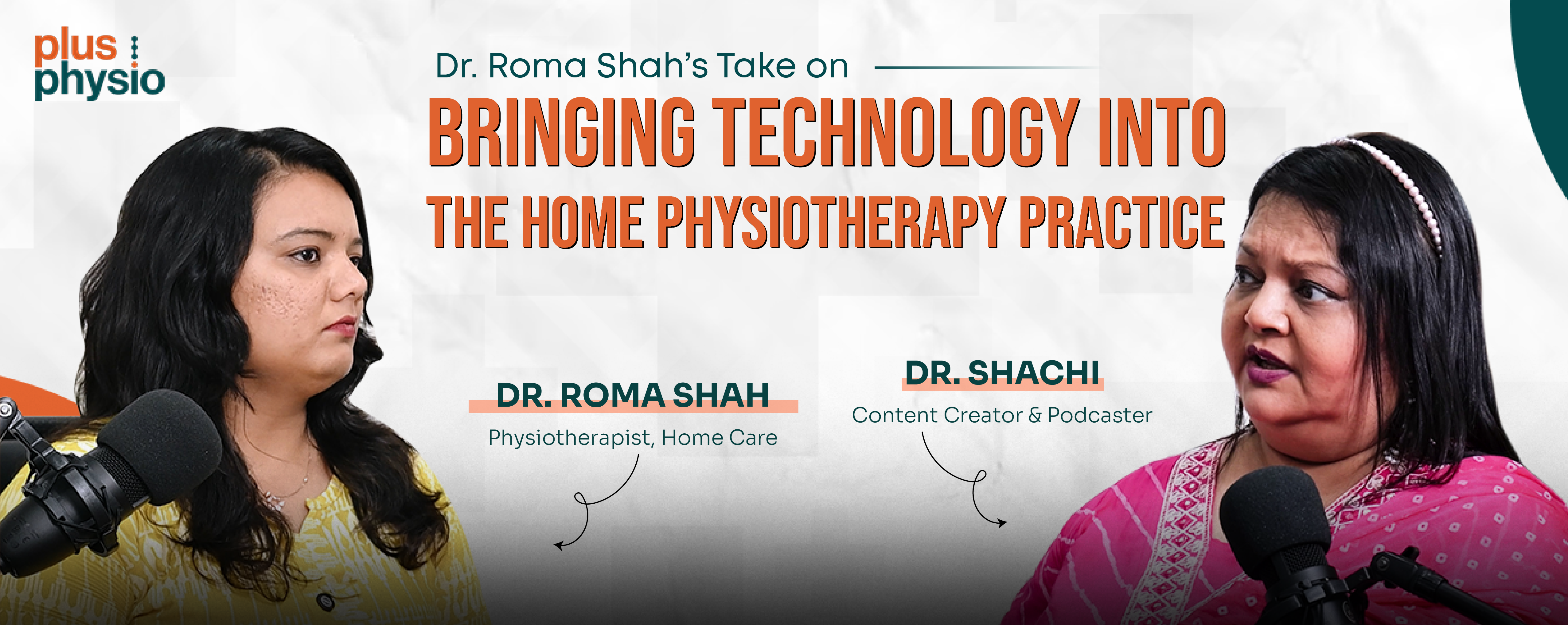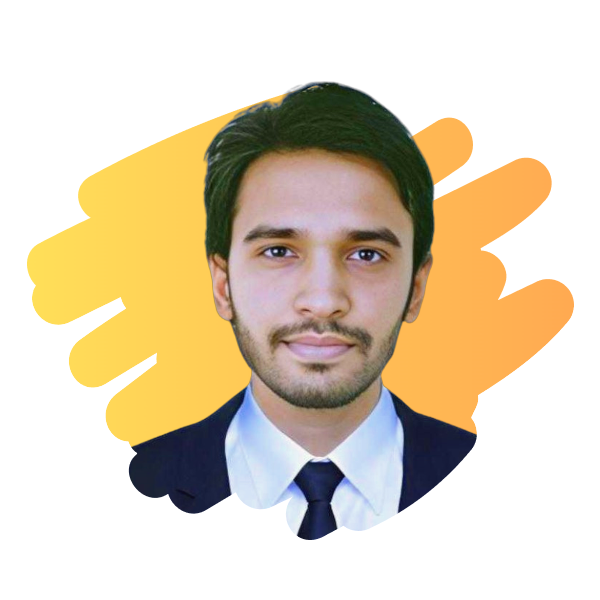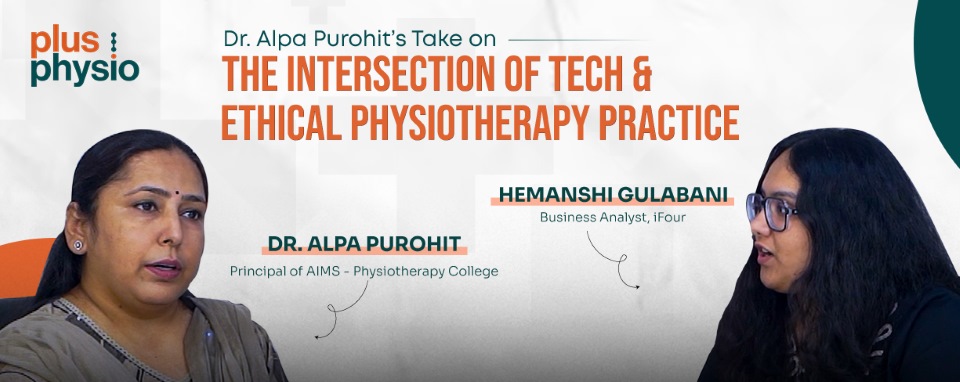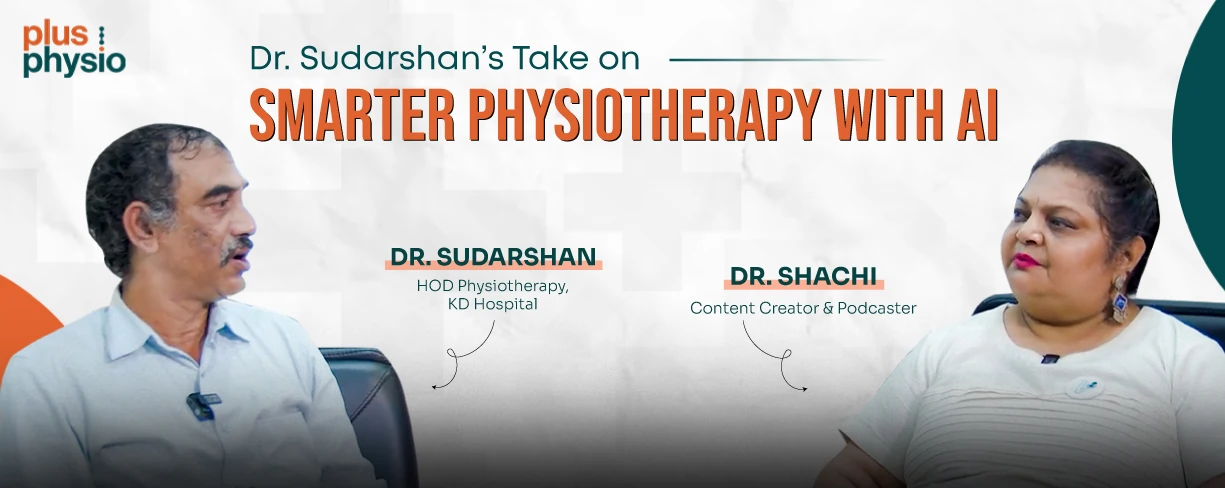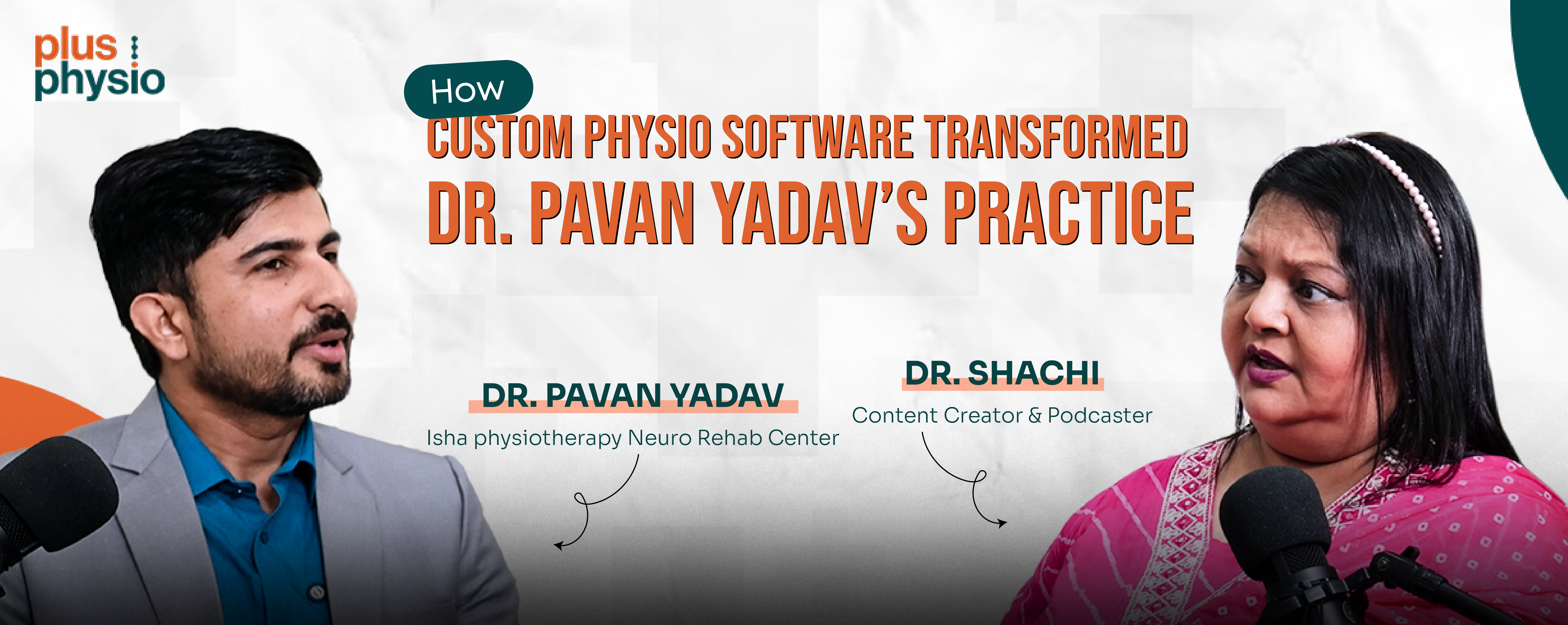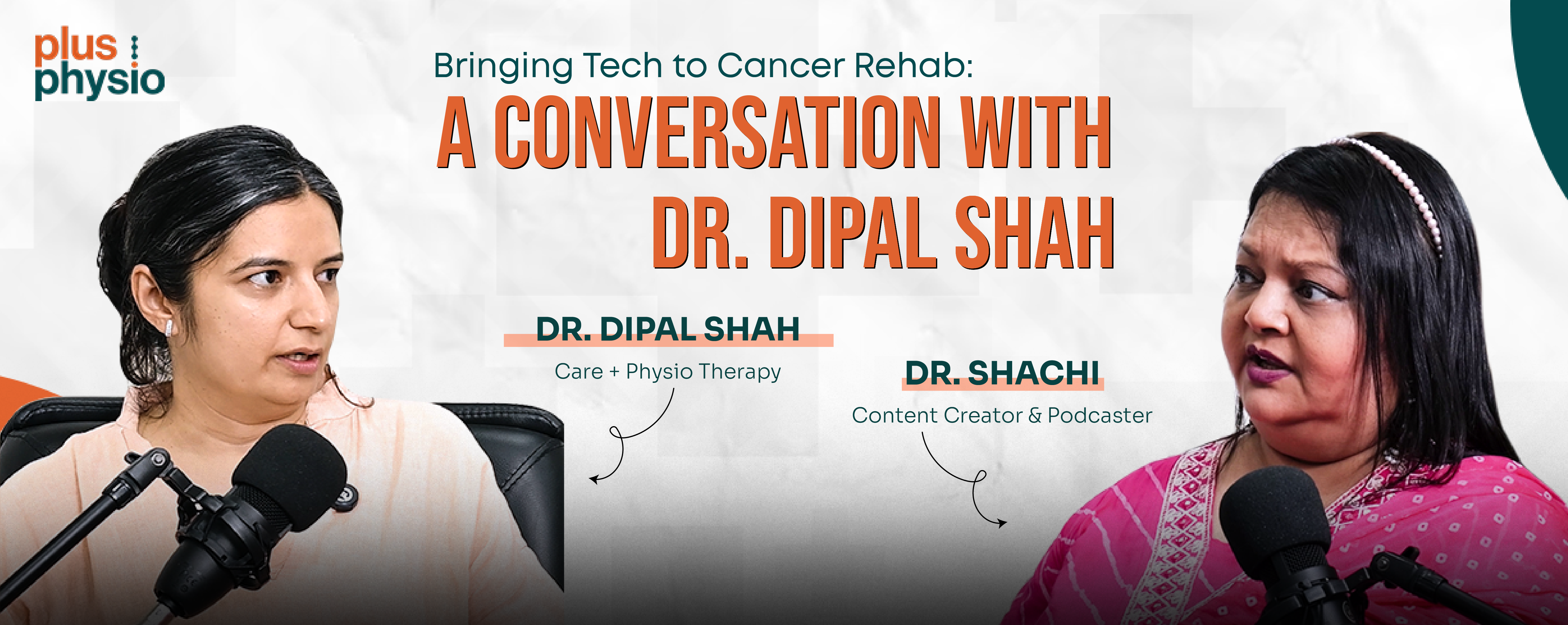When it comes to physiotherapy, every practitioner has their own style. Some run busy clinics with advanced machines, while others bring care directly to a patient’s doorstep. Dr. Roma Shah belongs to the latter group — a home physiotherapist passionate about helping patients regain movement and live pain-free lives.
Recently, she spoke with Dr. Shachi about her journey, why she still relies on paperwork, and how technology could make her work more efficient.
Dr. Roma graduated in 2018 with a Bachelor’s in Physiotherapy. Her career started in multiple physiotherapy clinics, but for the last year, she has been offering therapy at patients' homes.
Her main focus?
Geriatric physiotherapy (helping elderly patients improve mobility)
Musculoskeletal conditions like knee arthritis, spinal cord issues, back pain, and joint pain
“My motto is to treat patients and give the best therapy at home, conveniently.”
For now, Dr. Roma keeps her records — from patient details to payment status — on paper. She sometimes uses WhatsApp for appointments, but admits it's not consistent.
Why stick to paper?
She finds it clear and familiar, but there are trade-offs:
Missed follow-ups
Miscommunication about payments
No visual or data-driven way to track patient progress or her own growth
“Sometimes I mess up follow-ups… sometimes I miss recording payments. There's no platform to see growth in numbers or graphs.”
Like many physiotherapists starting out, Dr. Roma has hesitations:
-
Cost: assuming it's too expensive for small practices
-
Data security: concern about patient information being leaked
-
Usability: worry about whether it will be convenient for her workflow
Despite her concerns, Dr. Roma knows that technology could save her hours every day. With 8-10 patient visits daily, she spends 1-2 hours on manual recordkeeping. Those hours could be spent treating more patients if she had an integrated system for:
Appointment scheduling
Follow-up reminders
Payment tracking
Exercise prescriptions
She's now exploring software options and is open to solutions tailored for small physiotherapy practices.
While her home visits make it difficult to use large, AI-powered rehab machines, Dr. Roma does carry portable devices like:
Muscle stimulators
Electrotherapy units
TENS therapy machines
Ultrasound therapy devices
She acknowledges that bigger machines can give excellent results — but they're not practical for home-based work.
For other practitioners, Dr. Roma's message is clear:
“Software can help us maintain patient records, track growth, and access data anywhere. Paperwork is harder to manage and not easily accessible.”
She believes that integrating technology into physiotherapy isn't just about convenience — it's about improving patient care through better organization and follow-up.
The following is a transcription of the conversation between Dr. Roma Shah and Dr. Shachi:
DS
Dr. Shachi
"since our idea was to understand about technology and physiootherapy from various different physiotherapists with a v large variety of experiences we've got physotherapists who have been practicing for more than 15 years and actually using the software and we are talking to physiotherapists who are newbies who have just graduated just started with their practices and have never used the software so today I have with me a fresh graduate a very experienced graduate but a fresh graduate Dr roma who is going to tell us about her experiences and her fears about physiotherapy so welcome Dr roma can you tell us a little bit about your physotherapy practice when did you clear when did you start and where are you practicing now".
RS
Dr. Roma Shah
"my name is Dr Roma Shah. I have completed my bachelor of physotherapy from ANAN in 2018. Since 8 years, I am practicing as a physotherapist, before I was practicing in multiple physotherapy clinics. Now I am providing physiotherapy at home to patient directly".
DS
Dr. Shachi
okay and how long since you've been doing that".
RS
Dr. Roma Shah
"from last one year I am doing this practice home therapy".
DS
Dr. Shachi
"okay so you visit uh clients homes and give them physotherapy over there and do you use some kind of a software for this".
RS
Dr. Roma Shah
"no I am doing paperwork for data collection for payment collection and exercises and all that even for exercises".
DS
Dr. Shachi
"what about follow-ups reminders appointment setups you don't even use WhatsApp".
RS
Dr. Roma Shah
"yeah sometimes I use WhatsApp but mostly my work is on paperwork because I found it clear and neat and maybe it found convenient to me that's why but I sometimes it time so I am switching like if I found any software that make".
DS
Dr. Shachi
"so what is your biggest fear that why are you not starting with the software what is your biggest fear that it'll be expensive or it is not for small practices like It is for big hospital".
RS
Dr. Roma Shah
"yes true true true and what is the other biggest fear that you have that you're going to find it difficult to get used to one of the most is expensive maybe it is convenient for me for or not second is maybe data leaking if nowadays it's a very uh common problem we are facing that we our phone get hacked or something like that so maybe some patient are not ready to accept that situation yes third is uh basically these are the problems that you feel you're going to answer that but what about the benefits of technology like WhatsApp itself is telling you about appointments so suppose you have a follow-up with the client and you have 10 clients maybe in that particular month and you forget to do a follow-up with one isn't that loss of a client".
DP
Dr. Shachi
"so you are facing that problem".
RS
Dr. Roma Shah
yes yes sometimes I mess up uh the followup sometimes I miss the uh amount that they have paid and mis communication with happen that they maybe they tell me that I have paid but I have don't any record so it's more you feel that there is a lack of maintaining records because you're doing it on paper even when I want to check my growth and p uh patients growth it is also difficult because there is no graphical platform that I can see by that".
DS
Dr. Shachi
"so are you exploring the market for softwares".
RS
Dr. Roma Shah
"yes I am looking for that".
DS
Dr. Shachi
"you're looking for a software so I think we had one of our other fellow physiotherapists he's been using a software for 15 years and he mentioned that there are softwares available which can be used for small practices okay and not only that you can tailor make these software according to your needs and not all are expensive and not all are difficult to learn and almost all of them have got support so if something like that were to be made available to you would you think about using it".
RS
Dr. Roma Shah
"yes I would like to use that".
DS
Dr. Shachi
"so you do feel the need of involving technology in your practice because".
RS
Dr. Roma Shah
"in a day I have to go eight to 10 visits to every visit I have to remark that okay I visit I do this visit today I have to go for this visit next and everything payment done or not exercise done all this is done with the help of papers yes so if it was done by WhatsApp or a telecommunicator my one and two hour of day I have to spend you would save a lot of time and that saving of time you could spend it in looking after another patient".
RS
Dr. Roma Shah
"my moto is mainly to treat patient and give based therapy at home conveniently".
DS
Dr. Shachi
"what was the inspiration behind you becoming a physiotherapist".
RS
Dr. Roma Shah
"um when I was in 10th standard I was looking people uh like they are facing very trouble in walking or aged people so I thought what is the curable thing for that conditions so I make at that time I make my mind that doctor is needed doctor field is needed then I have a search about that so I found that physotherapy is the best uh field that can be prevent or cure so I found physotherapist the best field according to my nature i like public communication and giving more confidence to patient and people okay so that's a very noble thing for you to do and basically you're concentrating more on geriatric physiootherapy that means and movement returning movement to aging and aged joints what about injury disease are you focusing on that or only with geriatric patients".
UP
Dr. Roma Shah
"I focusing on muscular skitus uh problems also".
DS
Dr. Shachi
"so what is your passion which is the kind of clients that you like to treat and you've actually got a difference in".
RS
Dr. Roma Shah
"okay my main passion is about muscular condition just like knee arthritis spinal cord problems back pain joint pain arthritis and all".
DS
Dr. Shachi
"and how many sessions generally uh the client is able to see you".
RS
Dr. Roma Shah
"mostly depend on client recovery phase but it's mostly take 15 days to 30 days according to patient condition".
DS
Dr. Shachi
"and how can you train the patients to do the exercises on their own or do you need to go to them lifelong".
RS
Dr. Roma Shah
"no no no no after some phase if I feel proper that he can or he or she can do by own then I will uh guide them do exercise and do hot pack or cold pack according to nowadays there's a lot of things going on in the market about assisted physiotherapy actual machines which are computerized and have got software you know gradations done in them and physiotherapists are using those machines to treat patients so have Have you been exposed to those kind of machines".
RS
Dr. Roma Shah
"yes I am using some machines just like muscle simulator electrotherapy tense therapy ultrasound and all that".
DS
Dr. Shachi
"you're using that even when you're going for home visits you carry them along with you what about those gigantic machines which can actually suspend you and actually make movements do you think they are a good replacement for a physiotherapist they are able to do a better physotherapy than a human physotherapist".
RS
Dr. Roma Shah
"yes it will help machine is better yeah it will make a good result in patient but that is not possible to carry to your home visits some of the machines can be very large and it will be difficult for you to actually take them with you all machines are not possible because it's heavy to carry and it's some some kind of patients do you do require to do that all right so I think that has been a very knowledgeable session with you somebody who's just starting out on the journey and understanding that you know u uh software and technology will definitely help their practice what I would like to do is ask you to give a small message to the other fellow physotherapists who are on a similar journey as you as to why you feel that your physotherapy should be correlated with some kind of software integrated into their practice".
RS
Dr. Roma Shah
to my fellow physiotherapist i would like to suggest that software being helpful to us in patient records and all that as a physiotherapist I was I am not using any software right now so I have so I have many troubles just like uh collecting the data rem uh recording the data and maintain the data because sometimes we like to know about our growth and p person's growth but uh we because of lack of data we can't do this so I think if any software we have you we can use it will help us to record more data and easily accessible anywhere because paperwork is just like we have to uh collect with us and we are not easily accessible with paperwork so yes I would like to go for using softwares".
DS
Dr. Shachi
"thank you very much Roma for giving your valuable time to us and giving your insights in the use of technology and IT softwares for your regular practice and physotherapy i'm sure our uh observers will be benefiting with your inputs into it and uh best of luck for having your own clinic as fast as possible with the help of some useful software like plast".
Final Thoughts
Dr. Roma's story reflects a common stage in many young physiotherapists' careers — balancing traditional, hands-on methods with the possibilities technology can offer.
She may still be working with pen and paper, but her openness to exploring the right software is the first step toward making her home physiotherapy practice more efficient, scalable, and patient-friendly.
